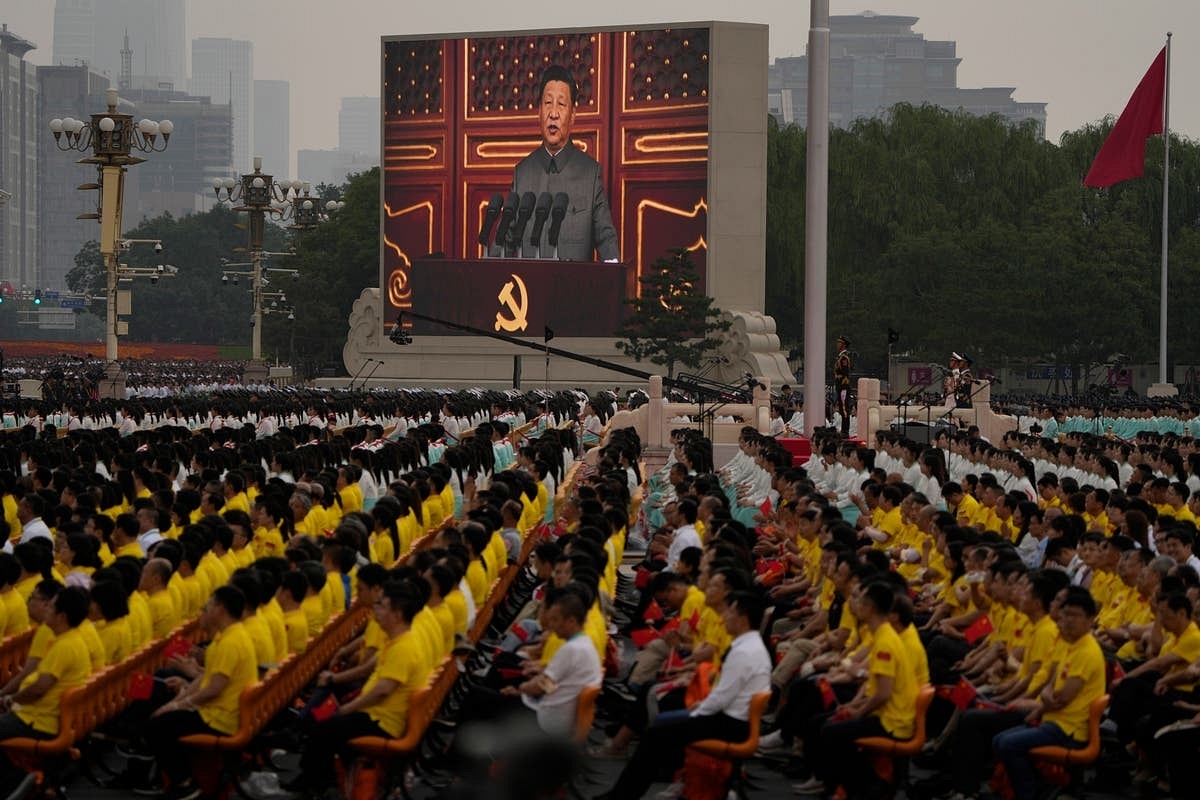World
What Are China’s Economic Plans For 2022?
- Currently, China’s economy is facing pressure from multiples areas — lower demand, lower growth expectations, supply chain issues and regulatory issues.

China CCP anniversary
China’s National Development and Reform Commission has said that bringing in economic stability would be its top priority as the country’s economy faces the threat of a slowdown.
Currently, China’s economy is facing pressure from multiples areas — lower demand, lower growth expectations, supply chain issues and regulatory issues.
Investors appear to be sceptical about China’s prospects as well. Over the last one year, the Hang Seng Index has fallen by 12 per cent over the last one year.
Further, over the last five years, the index has only given absolute returns of 5 per cent.
What Is Troubling China?
The defaults of Chinese realtor Evergrande, and several other developers have spooked the markets as well. The realtor has $300 billion in payables including money owed to millions of investors, employees, suppliers, and home buyers, apart from premier financial institutions.
A default could result in a contagion effect that ultimately affects the global economy. The stricter laws to prevent overleveraging could affect the ability of the economy to grow, as a large part of the economy remains dependent on continual infrastructure spending.
The Chinese economy was recently affected as it recently-faced a power crunch — with the world facing energy shortages. As a result, lower electricity generation led to plant shutdowns or lower productions. The shutdowns created concerns about the country’s food security as well.
Some provinces even saw large-scale power cuts as the government tried to make do with available energy sources. Despite China’s focus on increasing the share of green energy and lowering non-renewable energy consumption, coal has remained the prime fuel source.
Companies looking to de-risk their supply chains by moving their sourcing away from China pose another threat to the country. Over the last three decades, Chinese growth was fuelled by companies shifting manufacturing facilities to China.
However, after the current pandemic, companies have begun realising the supply chain risks that arise from being concentrated in a single country.
While China would continue to be a crucial part of the global manufacturing economy, we could see a manufacturing shift to other low-cost countries such as India, Vietnam, and Bangladesh.
The Chinese government’s crackdown on large Chinese technology companies has created panic among investors as well. An unstable regulatory environment is difficult for investors to navigate, making capital costlier for Chinese companies.
Further, due to lack of proper disclosures, United States regulatory bodies are pushing to de-list Chinese companies from exchanges. The US government has previously alleged that funds raised from American investors have been channelled through shell companies to fund the Chinese military.
How Does China Plan To Restore Its Economy?
According to Chinese media, the government has highlighted three major issues that threaten China’s rapid economic growth — supply shocks, contraction in demand, and weakening expectations.
In addition, the government believes that the external environment remains difficult to navigate.
In order to overcome these issues, the NRDC has highlighted certain aspects to focus on — economic stability and growth, supply-side related reforms to grow domestic demand, efficient supply chains, and smooth functioning of the economy.
Food Security Remains A Concern
Energy and food security saw a special mention as well, given the energy crisis the country faced in 2021 due to energy shortages. The Chinese President, Xi Jinping, said that self-sufficiency would be priority, especially in food and energy.
The NRDC has committed to improving the production of coal and natural gas. In addition, green energy sources such as solar, hydroelectricity, and wind energy would see renewed focus as well.
Food security would entail ensuring a consistent supply of rice and wheat by upholding minimum purchase price policies. Further, initiatives to protect and enhance the productivity of farmland would be taken up as well.
China is among the largest food importers in the world after the European Union and the United States. Hence, ensuring food security remains a major target for the country.
New Housing Reforms?
As highlighted earlier, the government is aware of the problems plaguing the housing sector. Housing has turned into a speculative asset in China as citizens continually trade in and out of houses with easily available credit.
The government has highlighted that housing is not a speculative asset, and has introduced several rules to prevent speculation. Curbing speculation while encouraging buying homes would be an important theme for NRDC as well.
Overall, China appears to be focusing on filling in the gaps the pandemic exposed in its debt-fuelled economy. The focus on growing the manufacturing sector is likely to continue with the NRDC promising to promote businesses and providing employment.
Support Swarajya's 50 Ground Reports Project & Sponsor A Story
Every general election Swarajya does a 50 ground reports project.
Aimed only at serious readers and those who appreciate the nuances of political undercurrents, the project provides a sense of India's electoral landscape. As you know, these reports are produced after considerable investment of travel, time and effort on the ground.
This time too we've kicked off the project in style and have covered over 30 constituencies already. If you're someone who appreciates such work and have enjoyed our coverage please consider sponsoring a ground report for just Rs 2999 to Rs 19,999 - it goes a long way in helping us produce more quality reportage.
You can also back this project by becoming a subscriber for as little as Rs 999 - so do click on this links and choose a plan that suits you and back us.
Click below to contribute.
Latest